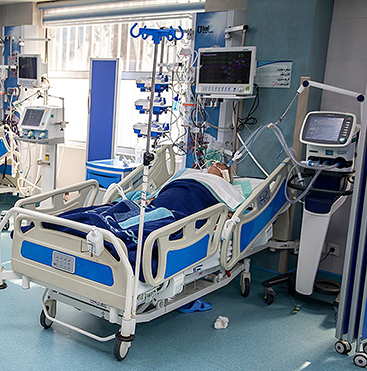

Decoding the legal framework for faster time-to-market.

Decoding the legal framework for faster time-to-market.

Patient adherence is critical to maximizing the benefits of medical wearables. In this article, we look at the key challenges to patient adherence in clinical trials and healthcare settings, and how device developers, researchers and providers can collaborate to harness the full benefits of wearables.

For “Systematic Testing of a Ventilator Remote Control System Towards Safe Use in Tele-Critical Care and Prolonged Care,” researchers developed a prototype system for network-based far remote-control of the NKV-550 critical care ventilator, with the goals of identifying and implementing foundational remote-control capabilities, and exploring essential performance, interoperability, and cybersecurity requirements.

The use of artificial intelligence in medical device design is already transforming health care. In this article we look at areas of greatest promise as well as the challenges that must be addressed to realize the promise of AI in device design and engineering.

Pulvinar Neuro has received a $3 million dollar NIH grant to further its research on noninvasive transcranial alternating current stimulation for the treatment of depression.

A Venture Capitalist recently joked that to fund a startup, all one must do is choose a URL that ends in ‘.ai’. Although he was not serious, it was an acknowledgment that companies pursuing AI are getting much attention, and there is a fear of missing out (FOMO) in the investment community if one of…

An adhesive developer explains why skin is so challenging to adhere to, why it’s never too early to explore skin-adhesive options for your wearable device, and recent milestones in stick-to-skin adhesive longevity.

Internet-enabled medical technologies have significantly improved the standard of care. They have also introduced a range of challenges for healthcare practitioners, administrators, and patients. The good news is these issues can be mitigated—or, in some cases, eliminated—in the engineering and design phase. Following are five key considerations for manufacturers to help foster connected healthcare’s continued acceleration.

IVDR has significant implications for the manufacturing of IVD devices, as it requires manufacturers to comply with new and more rigorous regulatory requirements. Wiktoria Banczyk, Product Manager Lab Filtration Medical Devices at Sartorius Lab Instruments, discusses the challenges posed by the implementation of EU IVDR 2017/746 and key considerations for manufacturers as they navigate today’s regulatory landscape.